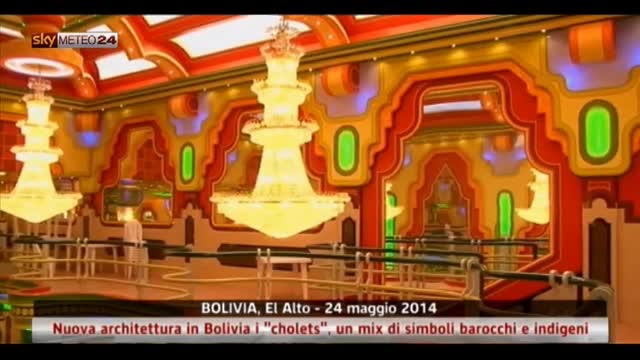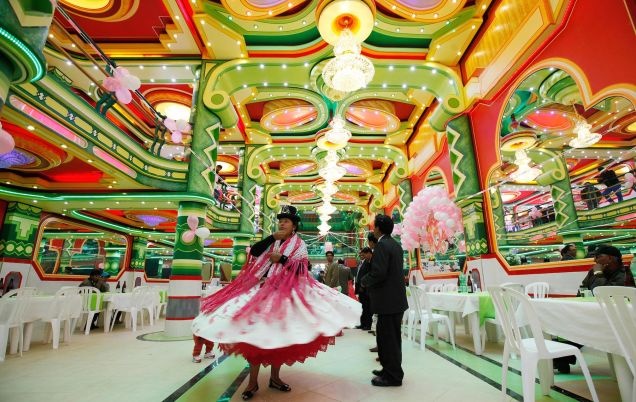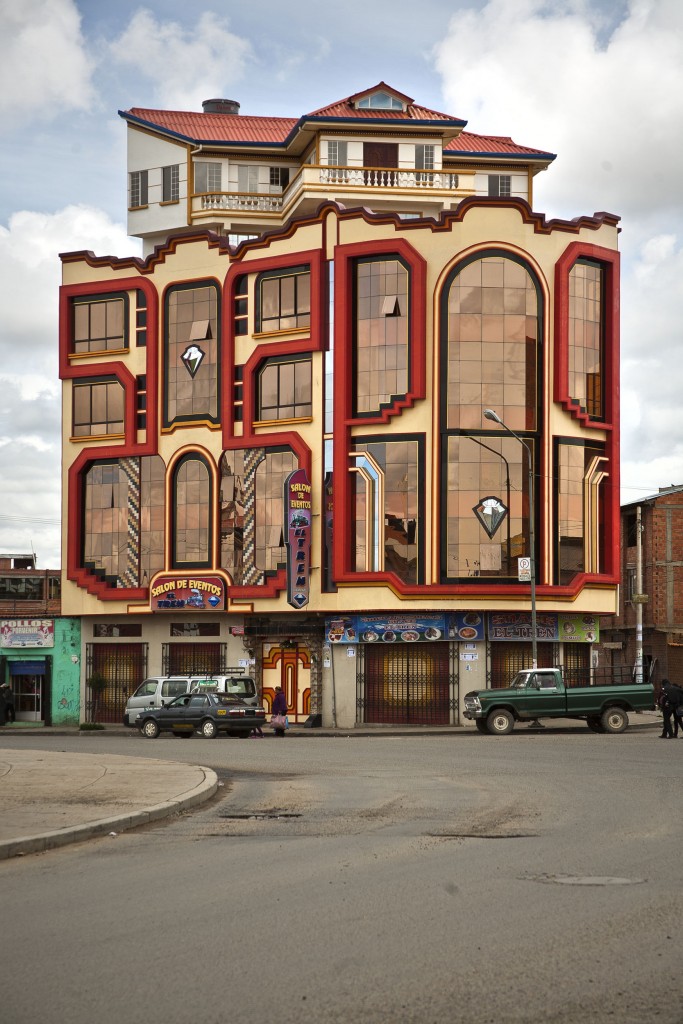How the eye-catching cholets of Bolivia are lifting perceptions of a city and its people
“When it’s woven with clear, strong and symbolic icons, through the design, colours and materials, the citizens immediately live enveloped by this fabric and are reminded of the core values of their society"
Panna Munyal
June 16, 2018
Updated: June 16, 2018 11:57 AM
https://www.thenational.ae/image/policy:1.740681:1529135342/wk15-JUN-interior.jpg
Freddy Mamani’s interior for the Principe Alexander ballroom in El Alto, Bolivia. AP photos
At first glance, it would appear as though the buildings designed in the cholets style stand out solely for their bright colours. However, if you delve deeper into this relatively new and localised school of architecture, a more nuanced rationale begins to emerge.
Before cholets took over its streets, the city of El Alto in Bolivia wore a dusty and grim look, a stance mirrored in the monotonous, unpainted brickwork of its buildings and even by its residents. The native Andeans, or Aymara, are a people who have endured centuries of socio-political marginalisation and are pejoratively referred to as “cholos”.
And then Freddy Mamani broke onto the scene. The Bolivian bricklayer-turned-civil engineer may not have a formal degree in architecture, but he is reverentially referred to as an architect. Because, for the first time in modern Bolivia’s history, Mamani’s structures celebrate the traditional culture of the country’s indigenous people by taking on a distinct and very deliberate Aymaran identity.
Mixing heritage with architecture
A neologism coined by combining the words chalet and chola (the colourful local garbs and the women who wear them), a home designed in the cholets style is distinguishable by the sheer frenzy of its vibrant colours, swirling patterns and symbolic iconography. The zigzag recesses, circular windows and geometric reliefs are all symbolic of the pantheon of the Aymara’s ancestral Incan gods.
More:
https://www.thenational.ae/lifestyle/home/how-the-eye-catching-cholets-of-bolivia-are-lifting-perceptions-of-a-city-and-its-people-1.740690






http://4.bp.blogspot.com/-GxT5gCjzCT0/U-ffVxbHoZI/AAAAAAAAc58/cQ1z1UedK1s/s1600/cholet+el+alto+bolivia+%C2%A9+cgaleno+2.jpg



ETC.








